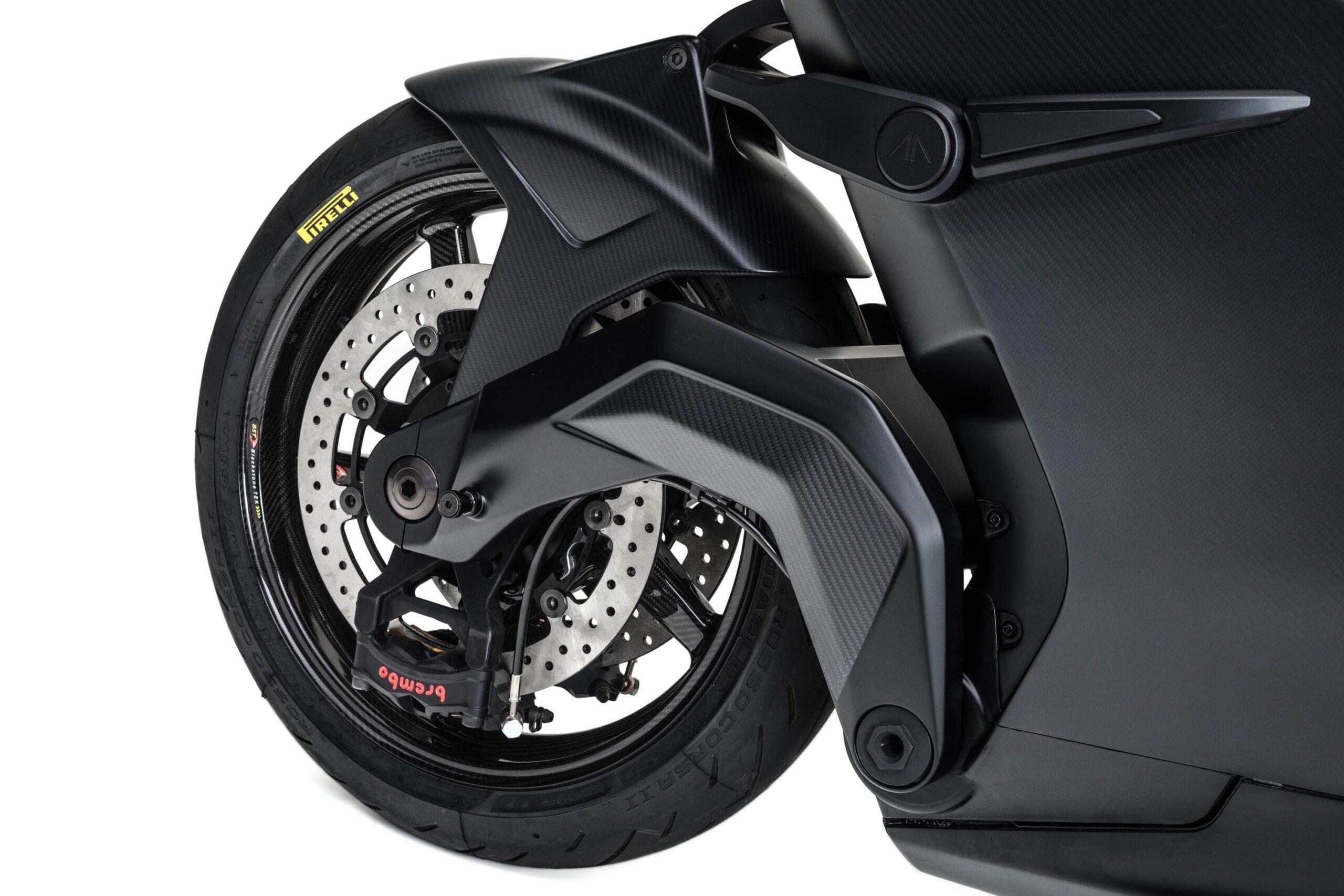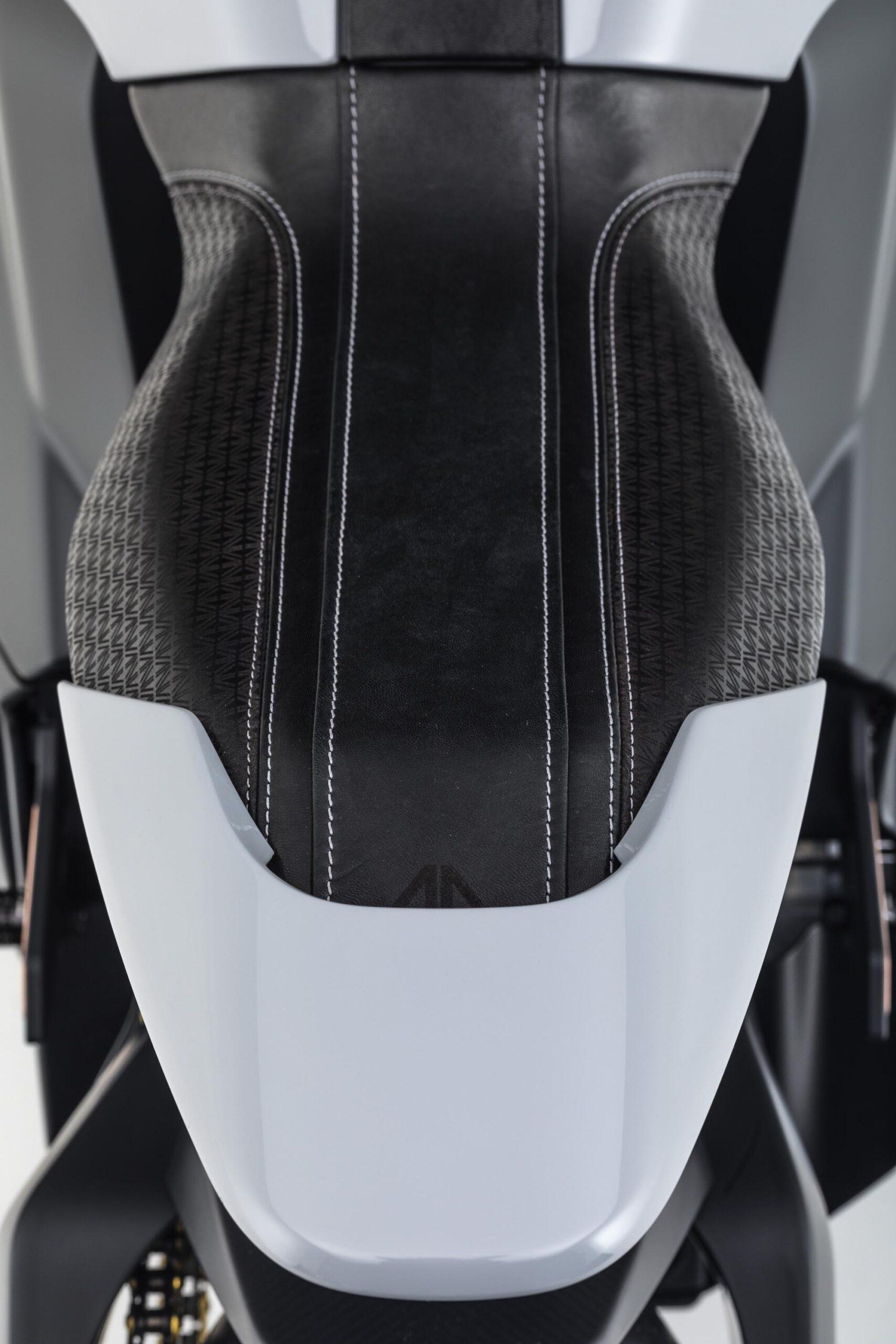Arc Vector – The Revolution is Coming

- Arc set to put world’s most advanced motorcycle into production at a new facility in South Wales in 2020.
- Arc Vector is a futuristic all-electric café racer built to order from £90,000.
- Carbon monocoque ensures 220kg weight and best-in-class chassis stiffness.
- Innovations include hub-centred steering, custom carbon swing arm, Human Machine Interface, Heads-Up Display, haptic alerts and one of the most energy-dense battery cells in existence.
- British designed and engineered bike will be fast, fun, stylish, and easy to maintain and ride.
- New rights-free images – http://bit.ly/2Ik9xxU
COVENTRY, ENGLAND, 4th June 2019 – The Arc Vector, the world’s most advanced electric motorcycle, is right on schedule and its breathtaking innovations are being eagerly refined. Announced at last November’s EICMA show in Milan, the £90,000 neo-café racer will enter full production at the end of 2020 with 399 units to be built to order in the first 18 months. This revolutionary motorcycle boasts Human Interface Technology, state-of-the-art carbon monocoque and swing arm, ground-breaking hub-centre steering, power-dense battery cells, bespoke brakes and suspension, and race-inspired wheels.
At the centre of the Vector is its ingenious battery-module carbon monocoque. Simplicity is key to its design and, countering the weight of the battery pack, the watchword is lightness. The motor and batteries are structurally integral to the monocoque, making the chassis incredibly stiff.
Arc is one of a tiny number of OEMs to develop its own carbon swing arm, in collaboration with MotoGP manufacturers Riba, which enables lateral flex for cornering stability, grip and agility. The liberal use of carbon, and other exotic materials such as quality alloys, exposed copper detailing and aircraft-grade aluminium, helps to keep the machine’s total dry weight down to 220kg.
Founder & CEO Mark Truman, the visionary engineer behind Arc, has undertaken the lion’s share of track testing himself at circuits and airfields around the Midlands, fettling the finer points of the Vector’s geometry and handling. A notable design direction has been hub-centre steering. This is characterised by the steering pivot points being inside the hub of the wheel, rather than above the wheel in the headstock as in a traditional layout. Truman explains the advantages:
“The system we’ve developed gives the bike low-speed control. There are a handful of manufacturers who’ve implemented hub-centre steering in the past, but they did so with an anti-dive system. Riders want the bike to dive under braking, that’s what we’re used to. For the Vector, we’ve created a system that has all the benefits of HCS but which feels like a set of forks. The advantage is stiffness which allows for a steep rake angle and a chassis that enables fast changes of direction with stability at high-speed. What we’ve devised is the best of both worlds with none of the negatives.”
The philosophy when it comes to handling is to balance performance with control. It’s an agile motorcycle with plenty of power, but it’s designed to be user friendly and fun to ride both in town and on the open road. It’s a bike designed for life more than racing.
Another rarity that Mark’s team has embraced is the belt drive, which guarantees low weight and low maintenance. It’s also quieter and smoother than a chain drive, and owners will never get oily hands.
Arc’s technical partners represent the best of breed. The Vector’s brake discs are Brembo and the calipers are their Stylemas, but bespoke in black oxide. The Ohlins suspension is entirely customisable, and the unique BST wheels are as light and strong as a pro race bike’s. Anti-lock brakes have been provided by Continental, Pirelli have made the tyres, the battery package is by Delta Motorsport. Arc is developing its own bespoke motor which saves on packaging space whilst being light and very powerful. All the ECUs are automotive-grade. The packaging of these components is masterful, enabling the lowest possible centre of gravity, minimal weight, sufficient cooling and a short, nimble wheelbase.
In addition to handling, a lot of development has been done on the powertrain with battery cell suppliers Samsung and on the dyno and the track in order to coax out every last drop of performance. The cutting-edge Samsung 21-700 batteries, of which the Vector packs a vast 960, are some of the most energy dense and reliable cells on the planet and the Arc Vector is the first motorcycle to use them. “Right now, you can’t actually buy them,” explains Arc’s Head of Electrical Engineering, Robin Boyd. “Samsung are prototyping and developing them, and have partnered with Arc Vehicle as part of this process. The battery cells rank as some of the most powerful of their kind and have the most longevity. With 960, the Vector has more battery cells and, in turn, power than any other electric motorcycle. A lot more. With these upgraded cells, we are extremely confident in meeting our performance and range targets.”
With a 399-volt electric motor producing 133bhp and a weight of 220kg, the Arc Vector will have the best power-to-weight ratio of any electric two-wheeler – 650bhp per tonne. Combined range will be around 270 miles. Zero to 60mph will arrive in three seconds and the top speed will be 125mph. No clutch, no gears, just you and the open road. Massive torque, traction control, ABS brakes, variable dynamic modes and ingenious Heads-Up Display and haptic alert systems make the Vector riding experience unique, safe and utterly euphoric.
Having prototyped the Vector in Coventry, Arc is targeting expansion to a 65,000 square feet HQ in St Athan, South Wales, in 2020.
| Vector Key Statistics: | |
|---|---|
| Motor | 399-volt electric |
| Performance | 133bhp |
| Torque | 148Nm (109 ftlb) |
| Weight | 220kg (kerb) |
| Seat height | 840mm |
| Price | £90,000 |
| Range (miles/km): | |
|---|---|
| Urban | 387/623 |
| Ex. Urban | 230/370 |
| Combined | 270/435 |



























